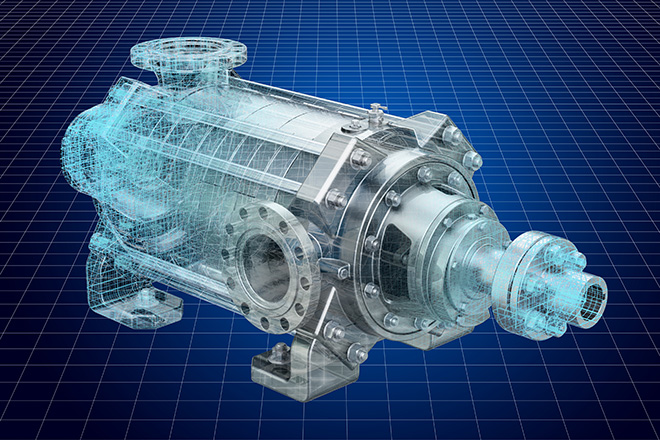The Ins and Outs of Geometry Recreation (aka Reverse Engineering)

Industrial Inspection & Analysis is proud to have been an early adopter of scanning and recreation of geometry as a service offering for the manufacturing industry.
Although the tools for capturing data and generating models have changed, our process is highly refined and optimized for many industry-specific challenges within many industries, such as medical devices, heavy equipment, and the firearms industries, as well as for tooling and plastic companies.
Need to make sure a new part works perfectly with an existing part? Need a duplicate and no longer own or have access to the original models, documents, or drawings? You need reverse engineering.
Simply put, Reverse Engineering, Geometry Recreation is used for that very purpose: to recreate a part, component, or any other object. Of course, the process is not as simple as that. Before a part can be reproduced, the dimensions, material properties and features of the part or component, need to be captured and analyzed. Then, the process of recreation can begin, and our technicians use Laser or CT Scanning to capture an object’s image.
The output of the scan is called a Point Cloud and could consist of millions of voxels, which is the 3D version of pixels, and the output has the basic shape of the object that was scanned. Then models are generated and the CAD formats can be created.
Why is RE used?
For older parts, called Legacy Components, where the original drawing no longer exists or cannot be accessed, reverse engineering is useful to gather the necessary information in order to correctly reproduce the part.
If replacement parts are needed and the Original Equipment Manufacturer (OEM) is no longer in business or is no longer producing the particular part, then reverse engineering is the process needed in order to understand and replicate the original piece.
If engineers are redesigning or enhancing a product or part, or if a company wants to conduct a competitor analysis, reverse engineering and 3D capture is used in order to update or improve the design and gain more insight as to how the part has been manufactured.
IIA can build files for use on most modern software platforms, as well as many legacy platforms. Our labs are run by experts who have eyes for detail and who have customers’ success as a priority. This means we make every effort to accommodate and exceed expectations.
Retaining legacy licenses for customers and creating neutral output files for you are just a couple of ways IIA’s Team goes above and beyond.
Verification & Project Handoff
Accuracy is paramount to the quality and the success of any RE project. To ensure quality and accuracy, we have an in-house Deviation Analysis (DA) process that ensures each feature and characteristic is accurate to the scanned part. This specialty DA process is used throughout the entire reverse engineering project and with every additional feature, enhancement, or iteration.
Interesting Applications
From individuals to small companies to historical restoration projects, this process continues to prove its worth. For example, someone may have a product idea for a fishing rod holder for a boat. Our technicians have the capability of scanning the location of installation on the boat, and create a model of that area. From the model, a CAD is generated to ensure the rod holder interfaces perfectly. Then production can begin.
Among the other most notable uses of this technology is for the preservation of historical objects. The Notre Dame in France has previously been scanned and models had been generated. Part of the fire-restoration process has included using the models to recreate exact matches in the effort to restore an historic and architectural phenomenon.
Details Matter
Just like in architecture, we believe details matter, so we close every project with a conference call and a screen share to ensure the results are understood and fit requirements. The Deviation Analysis is used as a final proof-of-work and to demonstrate a precise point-by-point comparison that what has been created, in fact, matches the physical part as scanned. This level of precision in verification is virtually impossible with manual methods.
Our knowledgeable technicians take the time to understand the unique requirements of each customer, and we pride ourselves on providing high-quality and accurate results. In addition to Reverse Engineering, the experts at Industrial Inspection & Analysis Lab Services can help with all your engineering projects, including Comparative Analysis, First Article Inspection, CAD Model creation and more. We provide many services across varying industries, including the Automotive, Medical Device, Aerospace, Defense, and Personal Safety industries. Our experts can scan parts from pennies to airplane wings, and for larger parts, our technicians come to you with one of our mobile laser scanners or FARO arms to capture the necessary point cloud data. We believe partnership is the key to success, and our team delivers professional service and reliable results every time to ensure customer satisfaction and success.




